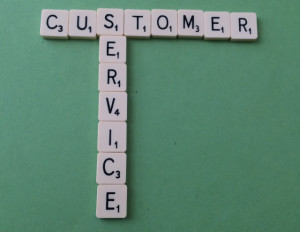Customers form opinions of us within moments during our interaction with them. That means that our first interaction with customers is crucial, but so is every other interaction. The customer experience should always be memorable and positive. In baseball, the batter gets three strikes. In most industries, we aren’t as lucky.
So, how does one develop a culture that inspires, develops, and motivates employees, at all levels of the organization, to create value for the organization and deliver their best, every time, because every customer counts?
Here are six steps to creating a culture that inspires employees to deliver memorable customer service. Use the acronym S-I-M-P-L-E to remember them.
S: Set Service Standards
Develop relevant and realistic service standards for the organization or department that is responsible for delivering customer service. Define each critical step in the customer service process. Answer the question “What does it look and sound like when done right?” for each of those steps or key tasks. Communicate and train to these standards and ensure everyone lives them.
 Train for when things go wrong — as they will. Equip staff with skills for handling service breakdowns. Help them feel prepared and confident to resolve challenging situations. Customers expect fast and accurate resolution of problems. They don’t want to hear “Let me ask my manager.” In fact, Forum Corporation research states that if customers’ problems are resolved quickly, they are more likely to return and be more loyal.
Train for when things go wrong — as they will. Equip staff with skills for handling service breakdowns. Help them feel prepared and confident to resolve challenging situations. Customers expect fast and accurate resolution of problems. They don’t want to hear “Let me ask my manager.” In fact, Forum Corporation research states that if customers’ problems are resolved quickly, they are more likely to return and be more loyal.
I: Inspire Employees to Consistently Implement Standards
Leadership is about relationships. The better the relationships a manager cultivates, the more likely employees will consistently deliver memorable service. Let’s face it. Employees work for you for one of two reasons: because they “have to” or because they “want to.” When are they more productive? Happy, engaged employees find ways to exceed customer expectations. Treat employees as you want them to treat your customers. Great service always starts behind the scenes.
As managers, ensure that you set the example for using standards. Nothing demotivates employees more than when a manager uses the “do as I say, not as I do” approach.
M: Moments of Truth—Identify All the Customer Touch Points
Identify and map out all the “touch points” that customers may experience, from the initial contact to the final contact and all points in between. What would rate as “memorable” at each touch point?
Develop a service map that reflects a true and complete customer experience, then ensure everyone is on board and knows how to behave at all key touch points.
Match the standards for engaging customers at every touch point by training to appropriate scripts that illustrate how the interaction should unfold.
Training must inspire employees to take service to the next level.
Focus instruction on transforming ordinary service to extraordinary (Remember: the difference between “ordinary” and “extraordinary” is that little extra.).
P: Provide Meaningful Feedback
Feedback is a gift that managers provide their employees. Supportive feedback lets employees know how they are performing and reinforces excellent service. Specific compliments let employees know what you’d like to see continue. Properly given, corrective feedback helps employees understand how current performance falls short of expectations and helps them adjust, develop, and improve.
Immediate feedback, in the moment, is a powerful coaching tool to improve and sustain high service. As Ken Blanchard says, “Effective feedback is the ‘breakfast of champions’ that brings out the best in your employees.”
L: Listen to Your Employees
Be open to new ideas. Brainstorm with employees and encourage them to uncover ways to surprise and delight customers. Continuously look at things objectively and with a fresh perspective.
E: Evaluate and Measure Results
Evaluate service progress and impact on a regular basis. Use cost-effective survey tools to measure how well you’re achieving service standards and exceeding customer expectations. Send surveys to a random number of guests monthly. Tabulate and communicate the results, by department. Use this feedback as a way to continually enhance, or tweak, service levels. Make service goal achievement an integral part of management and employee performance reviews.
A high level of excellent customer service does not happen by accident. It starts with hiring the right people (who are naturally friendly, caring, and helpful) and putting them in the right positions where their talents can shine. It then involves setting, communicating, and implementing service standards that allow happy, confident employees to provide memorable service that translates into happy customers, which will then translate into better financial performance.
Given today’s challenges, implementing these crucial, yet cost-effective, strategies can improve any organization’s bottom line, no matter its size.

